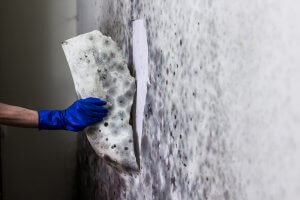Before a person ever decides to look for the best mold inspection company in their area, they should first understand a couple of facts:
1. In the author’s viewpoint, every house on earth has mold in it. Mold is a member of the Fungi family and exists naturally in our environment. It is airborne and enters our homes whenever a door or window is open and in many other ways.
2. Inside of a house, mold will not be a problem unless it has been exposed to water for more than 48-72 hours. So, if you have seen, or understand of evidence of water inside your home and you suspect that it has been there for a minimum of 48 hours, you are most particular to have hazardous (poisonous) mold.
3. Even if you can’t see any water, it still might be hiding behind your walls, sinks, or tubs; maybe under windows or other places. If you can smell a moldy or undesirable smell (some in the family may discover it while others can’t), you have a harmful mold problem.
4. If you or other members of your house have asthma, other breathing issues, coughing, runny nose or eyes, headaches, or tend to feel far better when you are far from the house and worse when you are in it, you likely have a mold problem.

Knowing that you likely have a mold issue but not knowing what to do next, speaks volumes in favor of employing a professional. However which one? You could likely have numerous mold inspection companies to pick from on websites like Yahoo or Google; however how does a homeowner discover the very best one for their requirements?
My recommendations are:
First I recommend that the company specializes in mold. Not mold and/or radon, lead, duct, etc. Next, I recommend that they have both education and experience a minimum of equal to or much better than their rivals. While a lot of every state requires that house inspectors be certified, just 2 states require so of mold inspectors. Are they certified? This would inform you that they cared enough about their occupation to acquire knowledge and training to meet requirements. Experience counts. For how long has the inspector been certified? The number of jobs have they carried out? Not simply the company, however the individual inspector? Can they get references? Have they been mentioned by the Better Business Bureau for any deceptive, deceptive, or dishonest practices?
The next criteria are important: Are they likewise in the business of mold removal or removal? If they are it could be an outright conflict of interest. Would not it be to there interest to overstate the level of mold problems and/or the quantity of remediation required if they were in line to pick up a job worth several countless dollars? For that reason, I recommend that you find a professional who only examines for mold.
OK, so now how should your inspector try to find and find your problem? When they are finished will they be able to tell you for certain where your mold is and why you have the problem? Isn’t that how you wish to spend your money?
Testing for mold is frequently done by the old made approach called air testing.
This treatment draws air into a machine that then traps it into a laboratory testing meal, which in turn gets sent out to a lab for culturing. This process can take a week or more for the results. When air and mold testing is performed, the inspector must always take one test beyond the house to figure out a benchmark regarding what mold( s) are prevalent in your area. They then will attempt to take as numerous tests inside of your home as the customer can pay for. In a lot of locations of the country, these tests cost about $100 each.
Some of the issues with air testing are:
1. The more tests that are carried out, the more costly the task.
2. Air testing is extremely incorrect. All it can do is to inform you what was in the air at that place at that moment in time. Results can differ widely gradually and the technique used. Airborne fungal spore concentrations vary considerably throughout hours, days, weeks, and seasons.
3. In colder climates when there is snow on the ground, the outcomes of the outside test will be ineffective because spore count is considerably or completely minimized. I have yet to hear that a client was informed of this reality.
4. There are no numerical standards to which tests can be prepared, making analysis difficult.
5. Even the best tests can not determine how much exposure individuals in your house have had in the past.
6. Fungal air tests are costly.
7. Results are slow to receive.
8. Understanding the kind of mold does not alter how you would react. All mold that is active, or was active, is bad mold.
Then what does represent an expert, accurate, and handy mold inspection?
The most intelligent assessments must: Find all mold. Figure out the cause; i.e. Where is the water issue(s). Describe how to repair the issue(s).
This inspection needs work, experience, and knowledge. It is likewise labor extensive; lasting about 2 hours or more on average. It starts with an intensive investigation of the home outside of the house. It discovers defects in roofing systems, chimneys, seamless gutters, downspouts, structures, and/or landscaping. In short, anywhere and any way that water might enter your home and cause a problem. Then, moving inside the inspection carefully is carried out looking throughout the house, basement, and attic for concerns under windows, sinks, tubs, showers, washer, and dryers. Tools such as wetness meters, hygrometers, and boroscopes must be utilized as appropriate.
